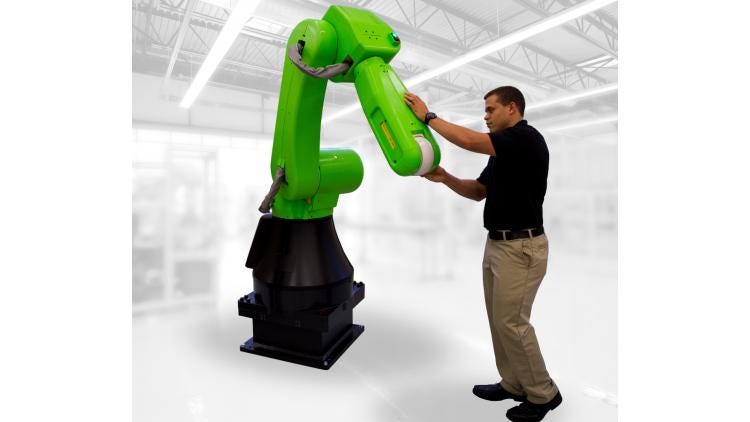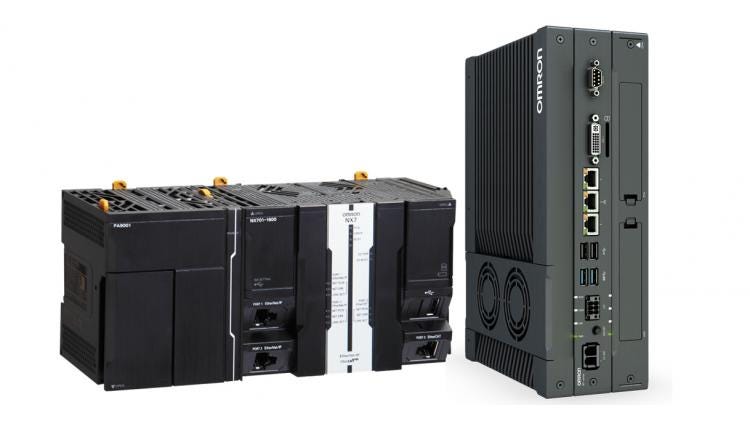AI in packaging: Defining terms, assessing impact—Part 2
July 24, 2019

How packaging operations can improve by leveraging artificial intelligence and machine learning.
In Part 1 of this article, we discussed the history of artificial intelligence (AI), the converging factors that are making it possible and the many ways AI may be defined in packaging applications. This article will now focus on AI-related strategies and impacts for packagers, including machine connectivity, zero downtime and rethinking plant layouts.
Connect the equipment, collect the data
Many manufacturers would like to increase the efficiency of their machines but face legacy equipment with different controllers. Some are collecting data but not enough to make a difference. Others are drowning in data with no idea how to process it. Most of all, manufacturers are hampered by conflicting “magic bullets” for collecting and extracting the value they need.
Says John Rinaldi, CEO, Real Time Automation, “The largest cost for new equipment is software integration: integration with other machines, with enterprise business systems, and with Cloud applications. Today’s integration process is time-consuming and exceedingly inefficient. Do I choose the connectivity supported by my PLC vendor? What about Industry 4.0, is that important to me? How can our shop take advantage of AI or machine learning? What are my risks and my returns for investing in Amazon AWS or Microsoft Azure Cloud services?”
There is something that manufacturers should do to alleviate at least some of these problems, he continues. Manufacturers should standardize on OPC UA and the Packaging Machine Language (PackML).
OPC UA, (Open Platform Communications—Unified Architecture is a machine communication protocol marked by being more secure, open, flexible and reliable for collecting information from controls, monitoring devices and sensors that interact with real-world data and communicating with enterprise-wide systems (see image above).
PackML is a standard for modeling machine behavior that provides a standard mechanism for monitoring and understanding industrial machine operation. PackML decreases the effort required to exchange data between machines and between users and machines via operator interfaces.
Zero downtime
Ask any plant manager and they’ll tell you they have a lot on their plate, but the number one goal is productivity. Luckily, machine learning and other emerging AI applications are making the concept of zero downtime an achievable reality.
Machine connectivity and AI applications are at the heart of Intelligent Edge Link and Drive (FIELD) system from Fanuc Robotics. FIELD provides advanced analytics and deep-learning capabilities for Fanuc robots, peripheral devices and sensors used in automation systems.
Once FIELD software is loaded and configured, machine data from all automation equipment, including robots, can be accessible to application developers through an open Application Programming Interface (API). Easy access to machine data significantly reduces the effort for a third party to develop applications to run on the FIELD system, including a variety of monitoring, analytic and real-time functions.
Zero Down Time (ZDT) is a Fanuc FIELD application that the company is using to collect data from more than 6,000 robots in 26 factories (in Fanuc’s facilities, as well as in its customers’ plants). ZDT monitors these robots to see if the application is causing abnormal wear that could lead to a failure and, if so, Fanuc sends parts with support to address the issue before any downtime occurs.
With ZDT, FANUC also keeps track of robot usage and sends reminders at appropriate intervals to ensure important maintenance activities are completed on time. As the FIELD system and ZDT grow in the marketplace, Fanuc will be able to help more customers with intelligent condition-based maintenance notifications and help optimize the performance and life of their robots.

Fanuc uses AI to monitor robots for predictive maintenance, what it calls Zero Down Time.
Real-time, real-world
Mike Chen, director of the Omron Automation Center Americas, concurs that interest is building in an AI approach to packaging but specifies it has to take place in the real world. “Whether it’s people or the technology making the decisions, it has to be based on real time in the real world—collecting, analyzing and utilizing the data, with all its intellectual, ethical and often safety-related implications.”
Such an approach makes AI an effective bridge between IT (information technology) and OT (operational technology), leveraging the intelligence of human assets (manufacturing engineers, operators, quality and maintenance personnel) with device intelligence. “The entire process becomes more robust the more we decide what to do with both the data and the decisions we can trust technology to make,” Chen says.
For example, devices such as Omron’s Sysmac AI controller are able to identify abnormal machine behavior without being explicitly programmed to do so. Since there could be many different factors and measurements that indicate an issue when observed together, automating the feature-extraction process saves a significant amount of time and resources. Leveraging machine learning results during production is key to ensuring end user-cost savings.
Keeping that data safe from bad actors is also a factor. Omron’s Sysmac AI operates with its own CPU and function blocks, requiring no internet connectivity or cloud computing. Data collection and analysis is performed within the same hardware as the controls program, which also improves data-processing speed and accuracy.

Controllers use and process AI applications at the device level—no internet or cloud necessary. Image courtesy Omron Automation.
Remaking the packaging line
Smart machines are built on smart components. As Performance Motion Devices CEO Chuck Lewin puts it, software-based motor drives are increasingly becoming the norm. They will continuously collect data from the motor and provide output adjustment commands.
From this wealth of measured motor behavior, algorithmic observers can be built that track changes in the motor, which in turn signal problems in the bearings and other mechanisms. Thus, AI will impact packaging equipment through motion drives that control conveyor belts, cappers, web tensioners, sealers and transfer arms that comprise machine mechanics.
AI is also at the heart of rethinking the factory floor. For example, what would a packaging operation look like without conveyors? Denmark-based Mobile Industrial Robots (MIR) recently launched a new MIR 1000, a mobile robot that can deliver 1,000-kilogram (2,200-lb.) payloads throughout a plant. An industry first, according to the company, is AI-enabled capabilities for improved robot use.
“Intelligent mobile robots make the new industrial layout much more flexible,” says Niels Jul Jacobsen, MIR chief science officer. “Replacing fixed conveyors with easy-to-change layouts mean users can train the system to their needs and changing customer demands.”
Where AI comes in, unlike a traditional automated guidance vehicle (AGV), driving behavior and route planning can change via smart cameras that not only recognize obstacles, but together with machine software can predict blocked areas in advance and reroute. In addition, the MIR mobile robots integrate different top modules including pallet lifts, conveyors or cobots for flexible applications where the work can come to the equipment.

AI-enabled mobile robots could inspire operations without fixed conveyors. Image courtesy Mobile Industrial Robots (MiR).
With better content, better knowledge
Where AI is concerned, proper planning and focus becomes paramount. Algorithmic efficiencies and event predictors are impressive, but the ultimate value is creating knowledge.
Dwight D. Eisenhower famously said, “In preparing for battle, I have always found that plans are useless, but planning is indispensable.” In evaluating AI in packaging production operations, collecting data is useless. Collecting and analyzing the right data is everything.
Ray Chalmers is founder and principal at Chalmers Industrial Communications, providing writing services for industrial technology providers since 2007. His career includes 10 years as an editor with the Society of Manufacturing Engineers and time as a staff editor on Packaging.
********************************************************************************
EastPack 2019 (June 11-13) is the region's premier packaging event connecting professionals from companies like PepsiCo, Pepperidge Farms and Mars with suppliers offering the latest packaging technologies, including a range of automation solutions, from semi-automatic equipment to sophisticated "smart" systems. Register to attend today!
About the Author(s)
You May Also Like


